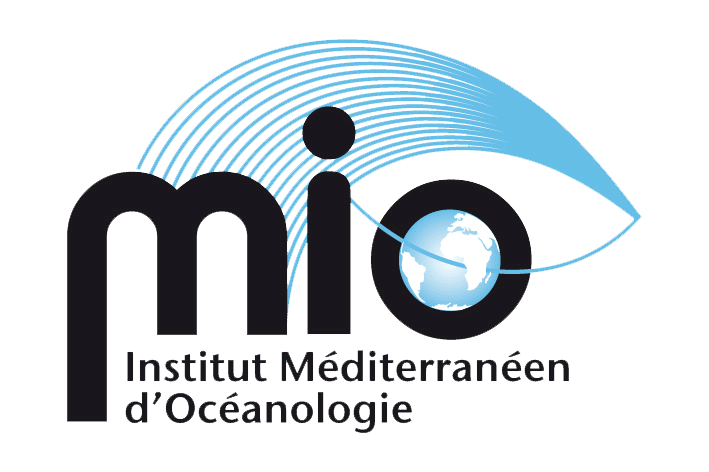Hélène Plihon will submit his thesis under the joint supervision of UTLN (MIO) and UFC (LABOMAR) on Friday 5 December 2025 at 3.00 pm in Toulon in the amphitheatre Y.008 (Campus de la Garde), on the following topic: Parameters influencing the upstream-downstream distribution of metals and carbon storage in semi-arid mangroves in Ceará, north-east Brazil/Parâmetros que influenciam a ocorrência de metais e o armazenamento de carbono ao longo de um gradiente montante-jusante em manguezais semiáridos do Ceará, Nordeste do Brasil.

Members of the Jury
- Ms Marie-Noëlle PONS, Director of Research-CNRS, University of Lorraine (France), Rapporteur
- Ms Patricia TURCQ-MOREIRA, Research Director, IRD -Toulouse (France), Rapporteur
- Mr Maxime BRIDOUX, Director of Research-HDR, CEA Saclay (France), Examiner
- Drude DE LACERDA, University Professor, CNPq - Universidade Federal do Ceará (Brazil), Examiner
- Ms Rozane VALENTE MARINS, University Professor, Universidade. Federal do Ceará (Brazil), Thesis co-director
- Mr Stéphane MOUNIER, Senior Lecturer (HDR), University of Toulon (France), Thesis supervisor
Abstract
This thesis focuses on two semi-arid mangroves in north-east Brazil, Pacoti and Jaguaribe, crossed by the rivers of the same name and studied along a river gradient running from upstream to downstream. Pacoti, which was once impacted but is now protected, contrasts with the Jaguaribe mangrove, which has been subject to intensive aquaculture downstream and urban, agricultural and hydraulic pressures upstream for more than twenty-five years. Sediment cores (80 cm) were taken at three river positions (upstream, middle, downstream), with an additional point near the shrimp farms for Jaguaribe. At 5 cm intervals, the sediments were analysed for grain size (fine fraction, Al, Fe), organic matter (OM) characteristics (%LOI, %C, %N, C/N, Rock-Eval®), total sulphur, trace metals (Zn, Co, Cr, Hg), and optical properties (UV-Vis spectroscopy and 3D fluorescence). Carbon and metal stocks, as well as pollution indices (PLI), were established for each core. For an equivalent organic matter content (~4 %), Pacoti sediments have an average carbon concentration (2.16 %) that is almost twice that of Jaguaribe (1.2 %). This difference reflects a different OM composition: in Jaguaribe, the OM is more nitrogenous (C/N ~15) and more oxidised (134-285 mg CO₂-g-¹ TOC) than in Pacoti (C/N ~21.8; 118-130 mg CO₂-g-¹ TOC). These signatures reflect mainly fluvial inputs (anthropogenic and natural) for Jaguaribe, whereas the OM in Pacoti comes essentially from the mangrove itself. This has a direct impact on carbon stocks and stability. Pacoti stores up to five times more carbon than Jaguaribe (85.83 versus 16.41 MgC-ha-¹). The OM in Jaguaribe sediments is more labile and not very humified, suggesting a greater vulnerability to mineralisation. Interactions between OM, sulphur and metals also reflect these contrasts. In Jaguaribe, Hg and Zn are strongly correlated with the fine fraction (R > 0.9), OM (R > 0.87) and nitrogen (R > 0.82), while Co is associated with fine particles (R = 0.8). For Pacoti, the correlation of Hg with sulphur (R = 0.84) reflects an interaction typical of preserved mangroves. Despite the accumulation of OM, the low complexation of copper (LogK ~4.95) suggests limited metal retention. Spatially, Pacoti shows relative sediment homogeneity along the fluvial gradient, whereas Jaguaribe shows strong heterogeneity, with accumulation of fine particles, carbon and metals (PLI>1 for Zn, Co) downstream and near the shrimp farms, making these stocks vulnerable to erosion. This study shows that the capacity of mangroves to store carbon and metals depends closely on the nature of the organic matter, the granulometry and the uses of the catchment area.
Resumo
Esta tese analisa duas manguezais semiáridas do nordeste do Brasil, Pacoti e Jaguaribe, atravessadas por seus respectivos rios epônimos e estudadas ao longo de um gradiente fluvial que se estende do trecho superior ao inferior. O estuario do Pacoti, historicamente impactado mas atualmente protegido por lei, contrasta com o do Jaguaribe, submetido há mais de vinte e cinco anos à aquicultura intensiva no estuario e a pressões urbanas, agrícolas e hidrológicas nas partes superiores. Testemunhos de sedimentos (80 cm) foram coletados nas zonas a montante, intermediária e a jusante, com um adicional próximo a efluentes de fazenda de camarões no estuario Jaguaribe. As análises sedimentares incluíram granulometria (fração fina, Al, Fe), características da matéria orgânica (MO) (%LOI, %C, %N, C/N, Rock-Eval®), enxofre total, metais traço (Zn, Co, Cr, Hg) e propriedades ópticas (espectroscopias UV-Vis e de fluorescência 3D). Os estoques de carbono e metais, os índices de poluição (PLI), foram determinados para cada testemunho a cada 5 cm. Para um teor semelhante de matéria orgânica (~4%), os sedimentos do Pacoti apresentam concentração média de carbono (2,16%) quase duas vezes maior que a do Jaguaribe (1,2%). Essa diferença reflete composições distintas da MO: no Jaguaribe, a MO é mais rica em nitrogênio (C/N ~15) e mais oxidada (99-206 mg O2.g-1 TOC) do que no Pacoti (C/N ~21,8; 89-99 mg O2.g-1 TOC). Essas assinaturas indicam aportes predominantemente fluviais (antropogênicos e naturais) no Jaguaribe, enquanto a MO do Pacoti tem origem principalmente autoctone, produzida pela própria vegetação do manguezal. This difference has a direct impact on carbon balance and stability. O Pacoti armazena até cinco vezes mais carbono do que o Jaguaribe (85,83 contra 16,41 MgC-ha ¹). A MO dos sedimentos do Jaguaribe é - mais lábil e pouco humificada, sugerindo maior vulnerabilidade à mineralização. As interações entre MO, enxofre e metais também refletem esses contrastes. No Jaguaribe, Hg e Zn estão fortemente correlacionados com a fração fina (R > 0,9), com a MO (R > 0,87) e com o nitrogênio (R > 0,82), enquanto o Co está associado às partículas finas (R = 0,8). No Pacoti, a correlação entre Hg e enxofre (R = 0,84) reflete interações típicas de manguezais preservados. Apesar da acumulação de MO, a fraca complexação do cobre (LogK ~4,95) sugere uma capacidade limitada de retenção de metais. Espacialmente, o Pacoti apresenta relativa homogeneidade sedimentar ao longo do gradiente fluvial, enquanto o Jaguaribe mostra forte heterogeneidade, com acúmulo de partículas finas, carbono e metais (PLI > 1 para Zn e Co) nas áreas inferiores e próximas às fazendas de camarão, tornando esses estoques vulneráveis à erosão. Este estudo demonstra que a capacidade dos sedimentos de manguezais de armazenar carbono e metais depende estreitamente da natureza da matéria orgânica, da granulometria e do uso do solo na bacia hidrográfica. Key words : estoque de carbono, metais, matéria orgânica, manguezais semiáridos, nordeste do Brasil, contaminação, complexação
Key words
carbon storage, metals, organic matter, semi-arid mangroves, north-east Brazil, contamination, complexation.




